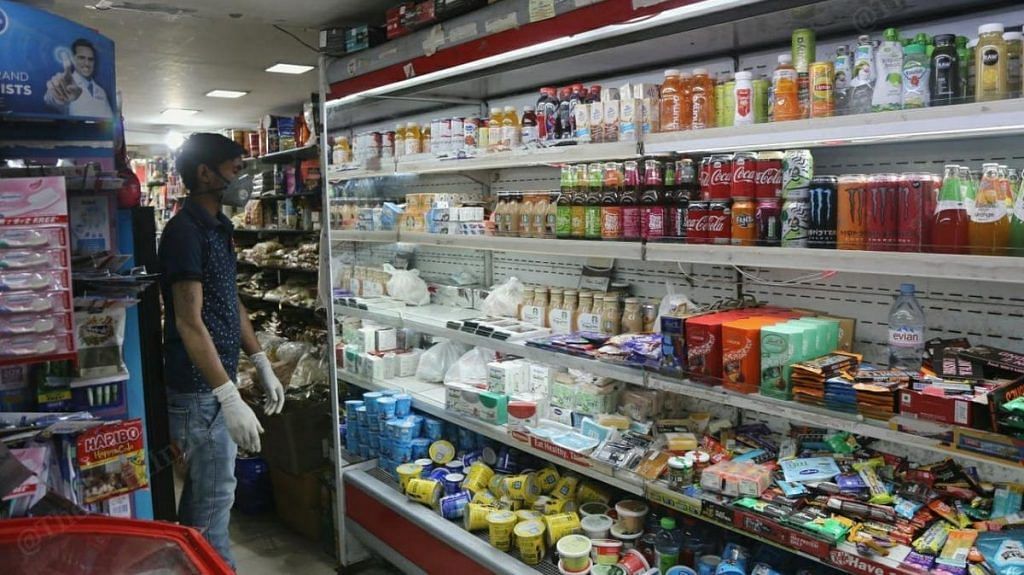New Delhi/ Mumbai: India’s 21 trillion rupee ($277 billion) virus-relief package fell short of economists’ expectations, providing fiscal measures that will help improve growth over the years without delivering an immediate boost to an economy that desperately needs it.
Analysts have been pouring over the details provided by Finance Minister Nirmala Sitharaman over the past five days, and the conclusion of many is that the additional spending boost is far less than the 10% of gross domestic product that the headline number suggests. HSBC Holdings Plc estimates a fiscal cost of just 1% of gross domestic product.
“Markets were expecting a more immediate demand-side stimulus,” HSBC economists led by Pranjul Bhandari, wrote in a note. “True that some measures to remove immediate distress are contained within the package. However, a large part of the attention has been towards medium-term supply-side measures.
”The rupee fell the most in Asia on Monday, tracking stocks as investors discounted the rescue plan. The currency declined as much as 0.5% to 75.97 per U.S. dollar in a third day of declines. The S&P BSE Sensex of stocks slid 2.6% at 2:35 p.m. in Mumbai.
Some of the key measures outlined by Sitharaman include: loan guarantees for small businesses, cheap credit to workers and farmers, tax breaks for service providers, increased foreign direct investment in defense manufacturing and a suspension of new insolvency proceedings for up to a year.
Here’s a look at what economists are saying about the support package:
Also read: Revised MSME is a long-awaited reform but not enough to address bloating sector
How much of this money is new spending?
Much of the economic package includes measures already budgeted by the government and the central bank.
“Only about 10% of this stimulus can be traced as direct additional budgetary cost to the central exchequer,” said D.K. Srivastava, chief policy adviser at EY India. “Nearly 5% of the stimulus relates to already budgeted expenditures.”
Rahul Bajoria, an economist at Barclays Plc in Mumbai, said the measures include 8 trillion rupees of support already announced by the Reserve Bank of India. He estimates the actual fiscal impact on the budget will be only 1.5 trillion rupees, or 0.75% of GDP.
What kind of a boost will the package provide?
The main focus of the government’s measures is providing a $72 billion liquidity boost for small businesses, shadow banks and electricity distributors, as well as loan support for farmers. Small businesses are the bedrock of the $2.7 trillion economy, employing more than 110 million people.
Loan support helps to cushion the blow for businesses but won’t boost consumer spending, a dilemma that many countries around the world are facing as job losses mount. The spending and reform measures proposed by India’s government are more geared to improve supply-side bottlenecks and support economic growth in the medium- to long-term. It doesn’t provide citizens with a cash boost to spend.
“Providing financial support to keep units alive is good,” said Pronab Sen, program director with International Growth Centre and a former chief statistician of India. “That’s necessary to begin with but that’s only step one. Step two is demand support. If this is all they are going to give the demand support will not exist.”
Also read: Both Covid crisis and economic package show Modi govt lacks the human touch
What does this mean for economic growth?
India’s services industries, which make up more than half of GDP, weren’t specifically targeted in the government’s relief package. Businesses from airlines to hotels to entertainment centers will continue to struggle despite the financial support measures outlined.
“The fiscal packages announced so far have stayed clear of sector-specific announcements that target the more vulnerable sectors, such as travel, tourism, hotels and restaurants,” Sonal Varma and Aurodeep Nandi, economists at Nomura Holdings Inc., wrote in a note.
Goldman Sachs Group Inc. economists said the structural reform measures announced by the government are more medium-term in nature and won’t result in an immediate boost to growth. They see GDP contracting 5% in the fiscal year through March 2021, which would be India’s deepest recession ever.
What happens next?
A nationwide lockdown was extended for a third time through May 31, with some incremental easing of curbs to allow economic activity to resume. Companies are facing difficulties reopening factories though — primarily because of travel restrictions, conflicting rules, broken supply chains and a shortage of workers.
With the fiscal package out of the way, the focus will once again shift to the central bank to provide support. The six-member monetary policy committee will likely cut interest rates again in early June. It’s already lowered rates by 75 basis points this year and injected billions of dollars into the financial system through money market operations.
“Given the extension of the lockdown, the RBI, in our view, should cut the repo and reverse repo rate by 75 basis points in the upcoming June policy or at least cut the reverse repo rate by 75 basis points while cutting the repo rate by 50 basis points,” said Kaushik Das, an economist at Deutsche Bank AG in Mumbai. – Bloomberg
